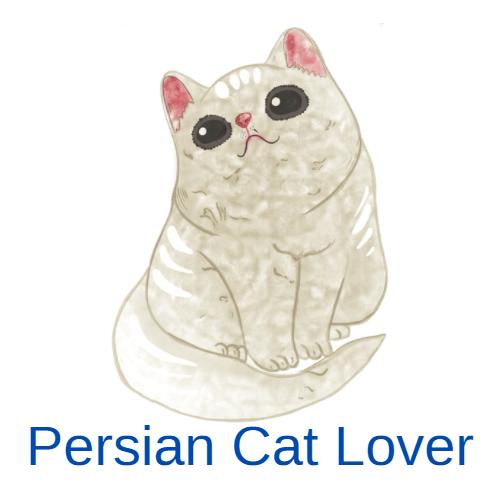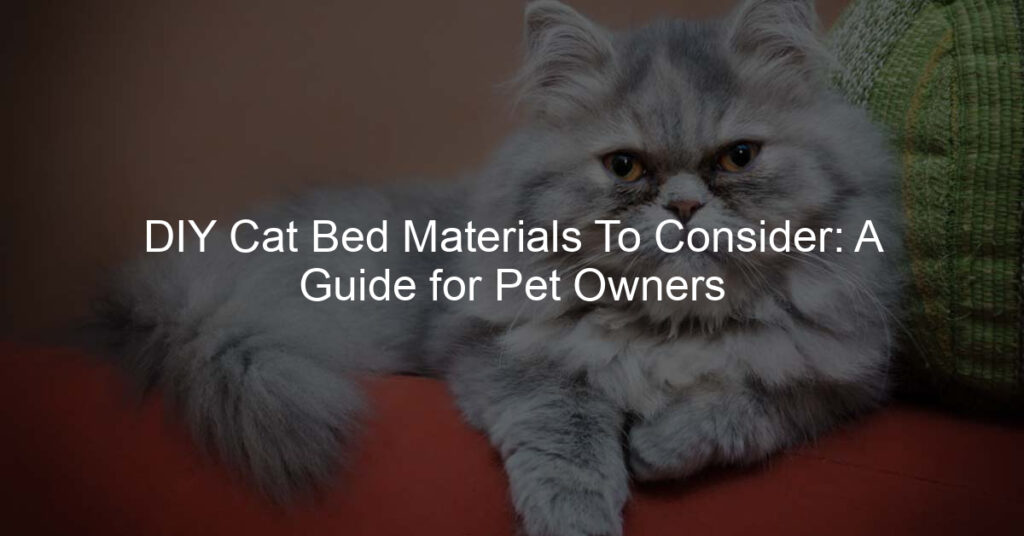If you’re a cat owner, you know that your furry friend needs a comfortable and cozy place to sleep. While there are many cat beds available in the market, a DIY cat bed and DIY Cat Bed Materials To Consider is a great options if you want to save money and create a customized bed that suits your cat’s needs.
When it comes to DIY cat beds, the material you choose is crucial. In this article, we’ll explore different materials you can use to create a comfortable and durable cat bed.
Understanding the Basics Before we dive into the types of materials you can use for a DIY cat bed, it’s important to understand the basics. A good cat bed should be comfortable and warm and provide a sense of security.
Cats love to curl up in small spaces, so a bed that provides a cozy and enclosed space is ideal. Additionally, the bed should be easy to clean and maintain.
Types of Materials There are many materials you can use to create a DIY cat bed. Some popular options include wool, fleece, cotton, and even old t-shirts.
Wool is a great choice for colder climates as it provides warmth and insulation. Fleece is soft and cozy, making it perfect for cats who love to snuggle.
Cotton is breathable and easy to clean, while old t-shirts can be repurposed to create a comfortable and eco-friendly cat bed.
DIY Cat Bed Materials To Consider
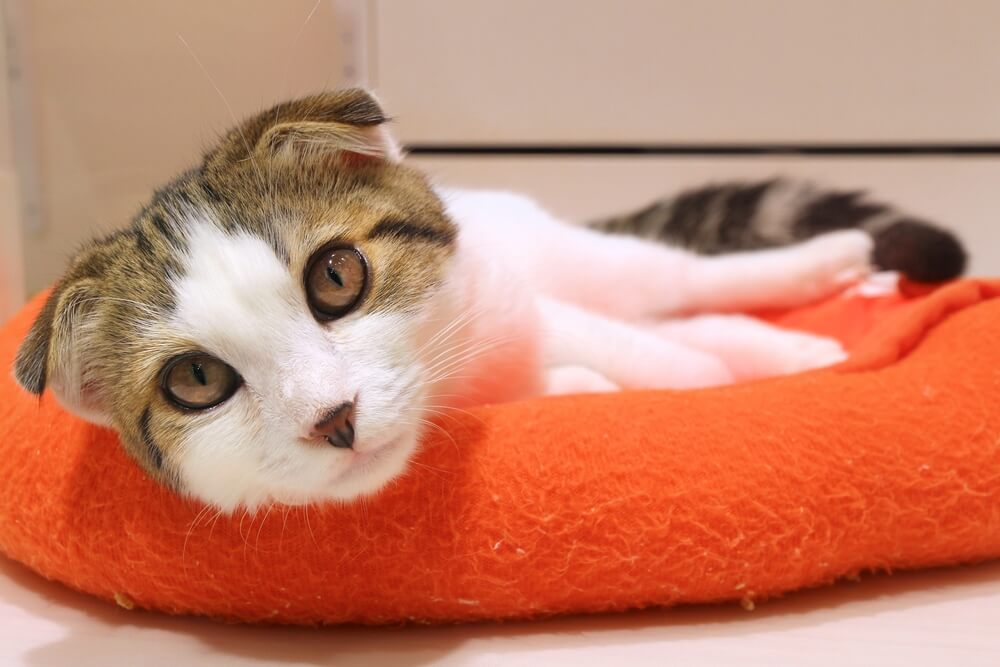
When it comes to creating a DIY cat bed, there are a few basics to keep in mind to ensure that your feline friend will be comfortable and safe. Here are some sub-sections to consider:
Importance of Comfort
Cats love to sleep and will spend up to 16 hours a day snoozing. Therefore, it’s essential to make sure that their bed is comfortable.
A comfortable bed will help your cat to relax and feel secure, which can reduce stress and anxiety.
When designing a cat bed, consider the size of your cat. The bed should be big enough for your cat to stretch out fully. A bed that’s too small can cause discomfort and may discourage your cat from using it.
Another important factor to consider is the bed’s softness. Cats love soft, plush materials, so consider using fabrics like suede, fleece, or faux fur. You can also add pillows or blankets to the bed to make it even cozier.
Material Safety
It’s important to choose materials that are safe for your cat. Some materials can be toxic or cause allergic reactions, so it’s essential to do your research before selecting materials.
Here are some materials to avoid:
- Cedar or pine shavings: These materials can be toxic to cats.
- Foam rubber: This material can be a choking hazard if your cat chews on it.
- Polyester fill: This material can be a choking hazard if your cat ingests it.
When selecting materials, look for options that are non-toxic and hypoallergenic. You can also consider using organic materials, such as cotton or wool.
When creating a DIY cat bed, it’s essential to keep comfort and safety in mind. Choose materials that are soft and non-toxic, and make sure the bed is big enough for your cat to stretch out fully.
With these basics in mind, you can create a cozy and safe place for your furry friend to rest.
Types of Materials
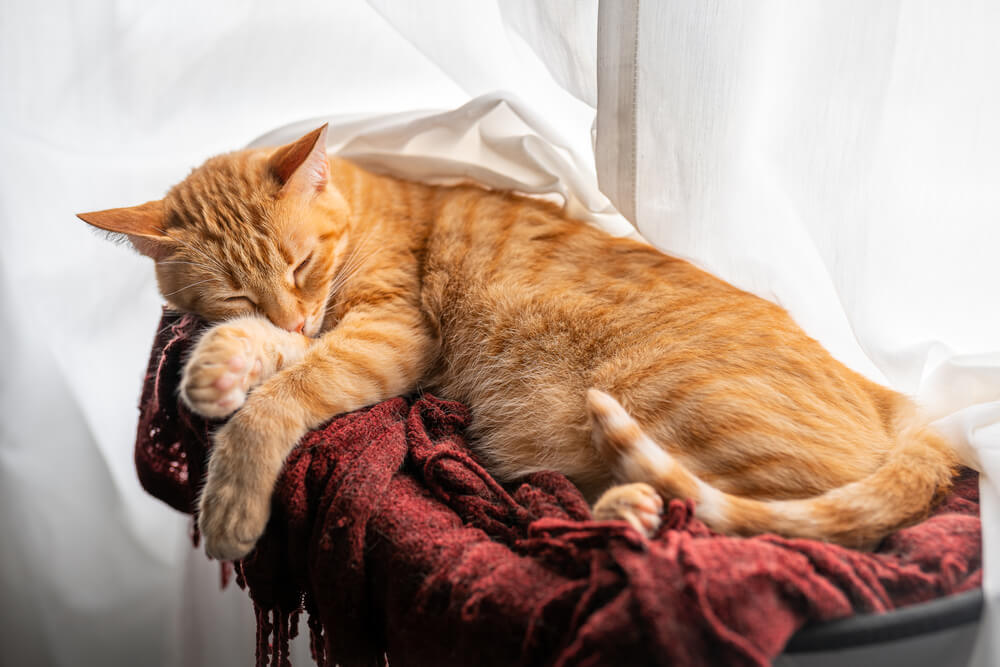
When it comes to making a DIY cat bed, there are a variety of materials to choose from. Here are some of the most common materials to consider:
Natural Fabrics
Natural fabrics such as cotton, wool, and linen are breathable and soft, making them a great option for a cozy cat bed. These fabrics are also easy to clean and maintain.
Nevertheless, they may not be as durable as synthetic fabrics and may not hold up well to repeated washing.
Synthetic Fabrics
Synthetic fabrics such as polyester, nylon, and acrylic are durable and easy to care for, making them a popular choice for cat beds. These fabrics are also often more affordable than natural fabrics. Yet, they may not be as breathable as natural fabrics and may not be as comfortable for your cat.
Foam Fillings
Foam fillings such as memory foam and polyurethane foam can provide excellent support and comfort for your cat. These materials are also durable and can hold their shape well over time.
Regardless, foam fillings may not be as breathable as other materials and may be more difficult to clean.
Recycled Materials
Using recycled materials such as old clothing or bedding can be a great way to create an eco-friendly cat bed. These materials are often soft and comfortable for your cat and can be easily washed and maintained.
Nonetheless, they may not be as durable as other materials and may not provide as much support for your cat.
When choosing materials for your DIY cat bed, it’s important to consider your cat’s preferences and needs.
Whether you opt for natural fabrics, synthetic fabrics, foam fillings, or recycled materials, make sure to choose materials that are safe, comfortable, and easy to clean.
Choosing the Right Material
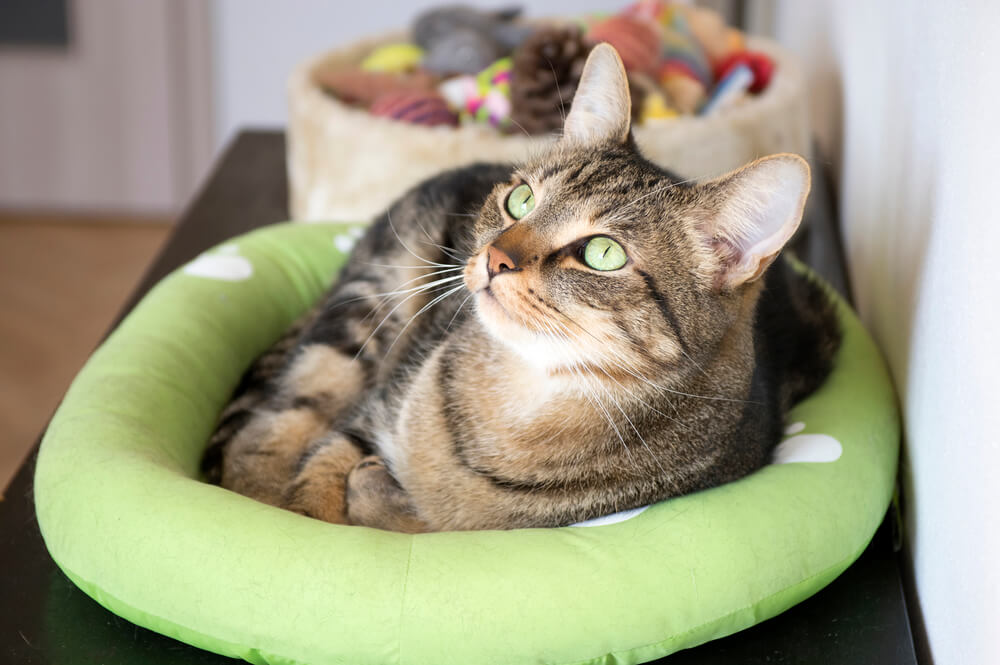
When it comes to making a DIY cat bed, choosing the right material is crucial to ensure your feline friend is comfortable and safe.
Here are some factors to consider when selecting the material for your cat bed.
Size of the Cat
The size of your cat is an essential consideration when choosing the material for the bed. A larger cat will need a more durable and robust material, while a smaller cat may be comfortable with something softer and more plush.
If your cat loves to stretch out while sleeping, consider getting a larger bed made of sturdy materials like wood or plastic.
If your cat prefers to curl up in a ball, a smaller bed made of softer materials like fleece or cotton may be more suitable.
Cat’s Age
The age of your cat is another important factor to consider when selecting the material for the bed. Kittens and young cats may prefer softer materials like fleece or cotton that are gentle on their developing bones and muscles.
Older cats may require more support and could benefit from a bed made of firmer materials like foam or memory foam.
Cat’s Health Conditions
If your cat has any health conditions, it’s essential to choose a bed that will provide the necessary support and comfort.
For example, cats with arthritis or joint pain may benefit from a bed made of memory foam or orthopedic foam that conforms to their body and reduces pressure points.
If your cat is prone to allergies, consider using hypoallergenic materials like organic cotton or bamboo. Cats with skin sensitivities may benefit from beds made of natural materials like wool or silk.
In conclusion, choosing the right material for your DIY cat bed is crucial to ensure your feline friend is comfortable and safe.
Consider factors like the size and age of your cat, as well as any health conditions they may have when selecting the material for the bed.
By doing so, you can create a cozy and comfortable sleeping space that your cat will love.
Maintenance and Durability
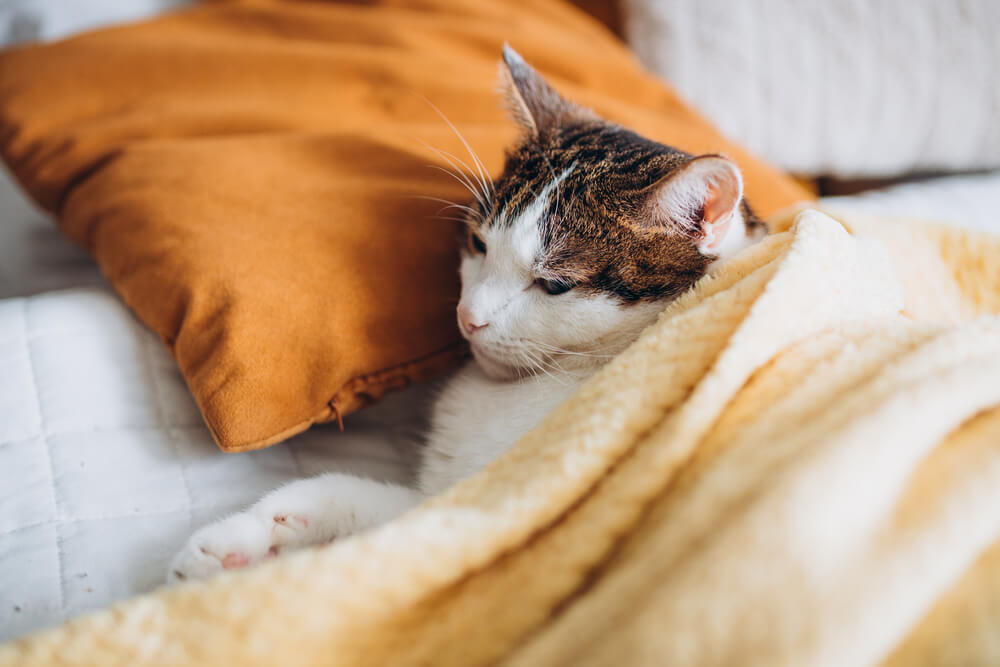
When it comes to DIY cat beds, maintenance, and durability are important factors to consider. You want a bed that will last and be easy to clean.
Here are some things to keep in mind:
Cleaning Requirements
Cats can be messy creatures, so it’s important to choose a material that can be easily cleaned. Some materials, like wool, cannot be easily cleaned and may require more maintenance.
On the other hand, materials like cotton or polyester can be machine-washed and dried, making them a more convenient option.
It’s also important to consider the filling of the bed. If you choose a bed with foam or other filling material, make sure it can be easily removed for cleaning.
Some beds may require hand-washing or spot-cleaning, which can be time-consuming.
Material Longevity
Durability is also an important factor to consider when choosing a material for your DIY cat bed. Some materials may be more prone to tearing or wearing down over time, especially if your cat likes to scratch or knead their bed.
Materials like wool or felt may be more durable and resistant to wear and tear, while materials like cotton or polyester may be more prone to pilling or fraying.
If you choose a material that is prone to wear and tear, make sure to reinforce any weak spots or use a double layer of fabric.
When choosing a material for your DIY cat bed, consider both the cleaning requirements and material longevity to ensure that your bed lasts and is easy to maintain.
Cost Considerations

When it comes to DIY cat beds, the cost is an important factor to consider.
While some materials may be more expensive than others, there are ways to create a comfortable bed for your feline friend without breaking the bank.
One affordable option is to use a woven rug to create a cozy bed. Simply fold the rug in half and stitch the sides together with embroidery thread.
Fill the bed with polyfill, and your cat will have a comfortable place to rest. This method can cost less than $8 to make, according to Paper and Stitch.
Another cost-effective option is to repurpose items you already have at home.
For example, an old sweater can be transformed into a cozy bed for your cat. Simply cut off the sleeves and sew the bottom shut. Fill the sweater with stuffing or an old pillow, and your cat will have a soft place to sleep.
If you’re willing to spend a bit more, there are also affordable materials that can be used to create a comfortable bed for your cat.
Suede, for example, is a soft and durable material that can be used to create a cozy bed. Fleece is another affordable option that is soft and warm.
Ultimately, the cost of your DIY cat bed will depend on the materials you choose and how much you’re willing to spend.
Yet, with a little creativity and resourcefulness, you can create a comfortable bed for your cat without spending a fortune.
Conclusion

In conclusion, there are many DIY cat bed materials to consider when creating a comfortable resting place for your feline friend. The best materials for a cat bed depend on your cat’s preferences and your design aesthetic.
Suede, fleece, and flannel are all soft and cozy materials that cats love to snuggle up in. These materials are also easy to clean and maintain. If you want to add a bit of luxury to your cat’s bed, consider using velvet or faux fur.
For a more natural look, you can use materials like wicker, bamboo, or wood. These materials are durable and can add a touch of rustic charm to your cat’s bed.
However, keep in mind that they may be more difficult to clean.
If you’re looking for an eco-friendly option, consider using recycled materials like old t-shirts or blankets. Not only is this a great way to repurpose old items, but it’s also a cost-effective option.
The best material for your DIY cat bed will depend on your cat’s preferences and your personal style.
Experiment with different materials and designs to create a bed that your cat will love and that complements your home decor.
Frequently Asked Questions
What are some materials to consider when making a DIY cat bed?
There are many materials that you can use to create a comfortable bed for your feline friend. Some popular options include soft fabrics like fleece, cotton, and flannel, as well as faux fur and plush materials.
You can also consider using natural materials like wool or felt for a more eco-friendly option.
How can I make a covered cat bed for my feline friend?
To make a covered cat bed, you can use a variety of materials like cardboard boxes, plastic storage containers, or even old suitcases.
Simply cut a hole in the side or top of the container and line it with a soft material like fleece or faux fur. You can also add a cushion or pillow for added comfort.
What are some cute cat bed ideas that I can DIY?
If you want to create a unique and stylish cat bed, consider using unconventional materials like a vintage suitcase or a woven basket.
You can also add fun elements like pom-poms, tassels, or decorative buttons to make the bed even more eye-catching.
What are some raised cat bed ideas that I can make myself?
A raised cat bed can provide a cozy and elevated spot for your kitty to rest. You can easily make a raised bed using materials like PVC pipes, wooden planks, or even a repurposed bookshelf.
Just make sure that the bed is stable and secure so that your cat can safely climb up and down.
How can I make a machine-washable cat bed?
To make a machine washable cat bed, use materials that can withstand frequent washing, like cotton or fleece. You can also create a removable cover for the bed that can be easily washed and replaced.
Make sure to follow the care instructions for the materials you use to ensure that they stay in good condition.
What is the best material for a cat blanket?
When choosing a material for a cat blanket, consider soft and cozy options like fleece, flannel, or faux fur. These materials will provide warmth and comfort for your cat while also being easy to clean and maintain.
Avoid using materials that shed or pill easily, as these can be harmful if ingested by your cat.
